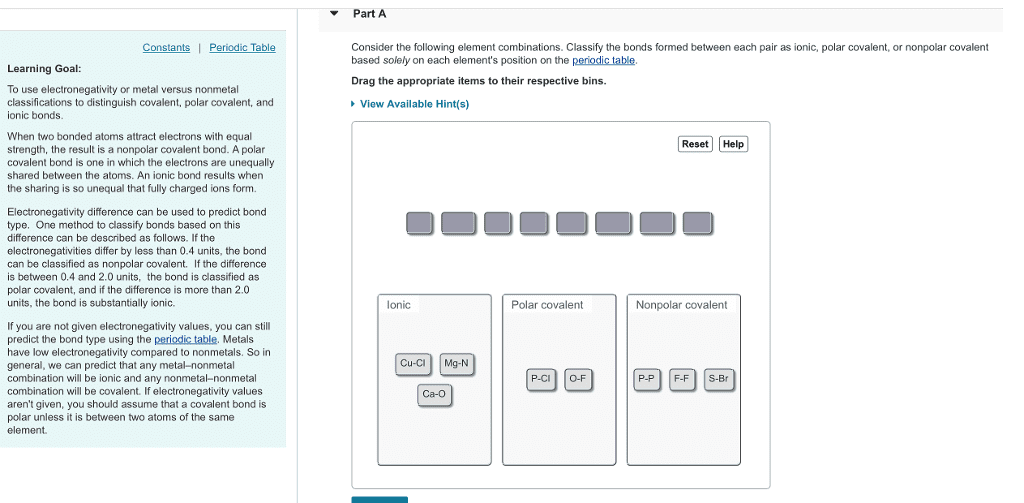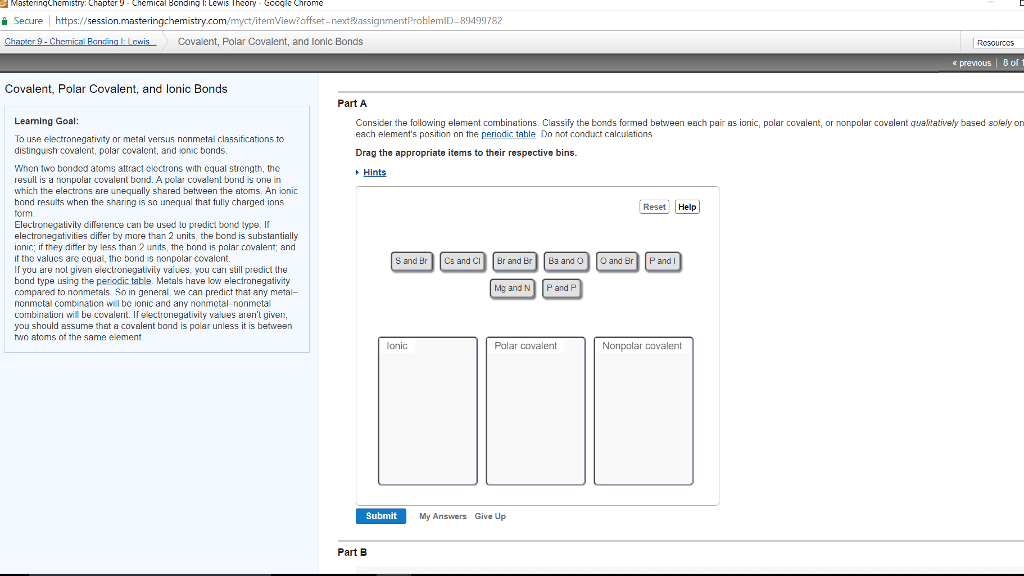CHM136H1 Chapter Notes - Chapter 2: Chemical Polarity, Lone Pair, Sigma Bond

CHM136H1(S) – Textbook à Chapter 2
• Polar covalent bonds – not completely ionic nor completely covalent à
electrons more strongly attracted to one atom than to the other
resulting in uneven electron distribution
o Electronegativity – ability of atom to attract shared electrons in
covalent bond
§ Bond polarity due to electronegativity (EN) differences
between atoms
§ Metals appearing on left side of P-table have lower
tendency to attract electrons, thus have lower
electronegativities, while the non-metals lying on the right
side of the P-table attract electrons strongly and have
higher electronegativities
§ Increases from left to right and decreases from top to
bottom on P-table
§ EN difference < 0.5 à non-polar covalent
§ 0.5 < EN difference < 2 à polar covalent
§ EN > 2 à ionic
𝛿
+ and
𝛿
- denotes partial positive and partial negative charges,
respectively.
𝛿
+ means that the atom is slightly electron-poor, and
𝛿
- means that the atom is slightly electron-rich. In other words,
the electron-rich atom is slightly more capable of drawing

2
bonding electrons towards itself, while the electron-poor atom is
slightly less capable of doing so.
• Electrostatic potential maps – use colour to show charge distributions of
entire molecule, where red regions stand for electron-rich and blue
regions stand for electron-poor
o Example:
“Crossed arrow” indicates
direction of bond polarity à
arrow head = electron-rich,
arrow tail = electron-poor
• Inductive effect – atom’s ability to polarize a bond à shifting of electrons
in a sigma bond in response to EN of nearby atoms
o Metals inductively donate electrons, while non-metals inductively
draw electrons
• Molecular polarity due to net individual bond polarities (and) lone-pair(s)
o Strongly polar substances often soluble in polar solvents, while
non-polar substances are insoluble in polar solvents
o Dipole moment – measures net molecular polarity in debyes (D)
§ Mathematically defined as the magnitude of charge (Q) at
one of the ends (same magnitude) of molecular dipole times
distance of separation (r) of the two charges à μ = Qr
• i.e., a +’ve charge and a -’ve charge separated by 100
pm will have a dipole moment of:
(1.60 × 10-19 C)(100 × 10-12 m)(
"#$
%.%%'#×#")*+,#-#∙/#
) = 4.80 D
• ionic substances have large dipole moments à great
charge separation
• lone pairs can contribute to dipole moment (charge
separation)
• zero dipole moment means that individual bond
polarities cancel and absence of lone-pair contributions

3
Compare the above molecular polarities with the following…
• Formal charge – don’t imply actual “ionic” charges in a molecule, but is
instead a bookkeeping method to keep track of how many electrons are
“owned” by the atom of interest
o Mathematically,
formal charge = # of valence e-’s in free atom – # of valence e-’s in
bonded atom
= # of valence e-’s in free atom – (# of bonding e-’s/2
+ # of non-bonding e-’s)
• For certain substances like acetate ion,
the 2 C–O bonds are actually the
same in reality even though one is a
single bond and the other is a double
bond on paper; both C–O bonds have
lengths intermediate between C–O
single bond and C=O double bond.
o Above 2 structures for acetate ion are resonance forms, which differ from each other
through location of pi and non-bonding electrons while everything else remains
intact
o Structure of acetate ion is really a single resonance hybrid (having characteristics of
both resonance forms), because it doesn’t actually jump back and forth between the
2 resonance forms

34
CHM136H1 Full Course Notes
Verified Note
34 documents




